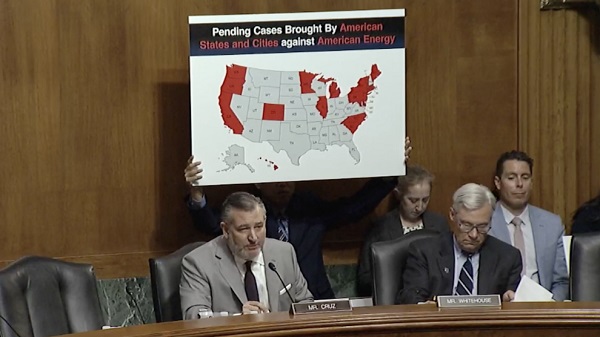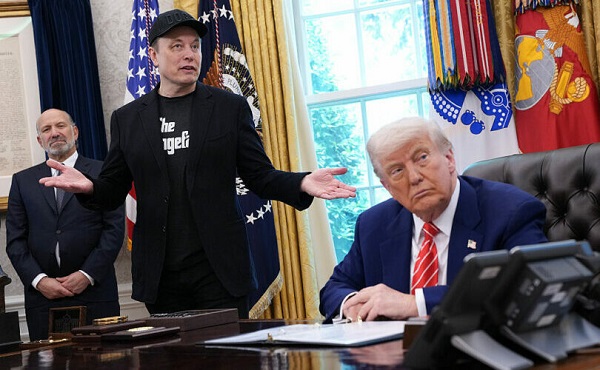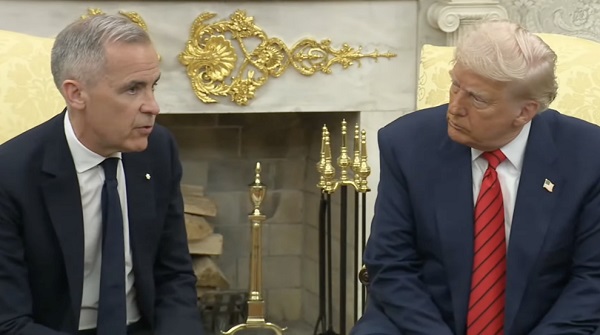Frontier Centre for Public Policy
Moscow attack highlights need for secure borders
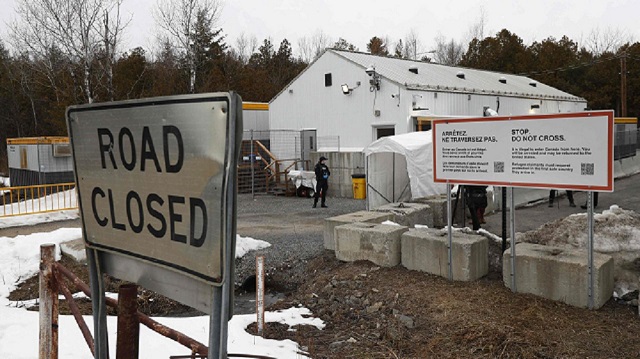
From the Frontier Centre for Public Policy
Are candid questions about border security and immigration really semi-racist, or are they legitimate self protection? Are questions about unchecked people entering our countries from parts of the world where Islamists have great influence “Islamophobia”, or are such questions perfectly understandable given the Islamist-inspired attacks that occur with regularity around the globe?
The shocking terrorist attack that took place on March 22, 2024 near Moscow is still reverberating around the globe. Exactly who was responsible for the attack and why it happened is not completely clear. One of the many Islamist terrorist factions, IS Khorason Province, has taken “credit” for the bloody massacre, but the details are murky. To add to the murk the videos that have emerged showing large powerful shooters that some say stand in stark contrast to the videos showing smaller and less robust Tajik suspects confessing to being the shooters. So, conspiracy theories are flying.
Meanwhile, Vladimir Putin seems intent on trying to blame Ukraine, but that is entirely predictable. Everything Putin says is now taken with a grain of salt by the international community. Ukraine does not appear to be connected. What is known is that Putin was warned recently by the U.S. that exactly such an attack was in the works, but angrily blew off the warning as American propaganda. How Russians will react to this information -or even if they will find out about it – is not known. We don’t know much more than that at this time. Hopefully the details will become clearer with the passage of time.
However, two facts about the incident that do appear to be reasonably certain are that the perpetrators were not Russians, and that the attack was related to an Islamist terror group that hates Russia – and apparently everyone else that does not share their philosophy.
That definitely includes Canada. Should we worry about such an attack taking place here?
At one time the answer would be “probably not”. Canada was a nation with a sophisticated, well-regulated immigration system that weeded out potential terrorists, and tightly controlled borders. A dangerous person might still get in, but chances are that even if he did his movements would be monitored, and he would be stopped before committing an atrocity. But not anymore.
This all changed when Justin Trudeau became prime minister in 2015. Canadians were mystified when he told the New York Times that Canada was a “post national state”. What did he mean?
What he meant began to become clear when he sent out his famous January, 2017 tweet basically inviting any global resident who cared to come to Canada – no questions asked.
“To those fleeing persecution, terror & war, Canadians will welcome you, regardless of your faith. Diversity is our strength #WelcomeToCanada,’
And thousands did. Roxham Road became internationally famous as a pleasant lane where any global resident with the wherewithal to fly to the United States could get a cab to Roxham Road, and simply walk into Canada. They would then agree to show up at an immigration hearing they had no intention of attending. And that would be it. They would stay as long as they liked.
Canadians began to understand the implications of being a “post-national state”. Because does such an entity as a “post-national state” even need borders, border guards, border security – or even an army, for that matter? Aren’t concerns about terrorists getting into your country rather silly now if Canada had apparently evolved past that outdated “nation state” stage? And why even be concerned with how many people were entering the country if borders weren’t really relevant any longer?
So people came. Anyone who raised questions about this radical new philosophy was branded as something akin to a racist or white supremacist. Or, worst of all – “like Donald Trump”, who had famously questioned the wisdom of allowing free entry into the U.S. of people from countries where Islamist philosophy prevails.
This worked. The Conservatives were thoroughly intimidated. So they basically remained silent, while millions of immigrants and foreign “students” flooded into the country, with little in the way of background checks.
In recent years the number of people coming into Canada as asylum seekers, foreign students, or immigrants in other categories has been astounding. Last year alone, Canada had an additional 550,000 immigrants, but more than 1,000,000 foreign students.
These are staggering numbers. Most of these people are probably peaceful and productive people. But how many of them are not? How many of the million “students”, for example, might have ties to the same Islamic terrorist group that terrorized Moscow?
The fact is that we don’t know. The numbers coming in are too great. They are coming in too fast. And they are not being properly checked. The frightening reality is that if even a tiny fraction of these virtually unchecked people are terrorists Canada could see tragedy unfold any day of the week.
Many of these foreign students appear to be involved in the lawless and shockingly antisemitic protests, now occurring daily in public places, and even in Jewish neighborhoods – sometimes directly in front of synagogues! In January, 2024 National Post commented on this frightening phenomenon:
“In recent months, we have witnessed a critical mass of antisemitic Canadians willing to vandalize Jewish businesses, protest relentlessly for a Palestinian nation-state “from the river to the sea” and even threaten police officers with death.”
The Post notes that most of the most violent protests appear to involve new immigrants and foreign students from Muslim nations. It would be a slur on these people to suggest that they are tied to an Islamist terrorist group, like the IS-K group claiming responsibility for the deadly rampage in Moscow. And yet, Canadians who are witnessing this alarming antisemitism have a right to know with whom they are sharing their country. That is the right of every citizen.
Our neighbours to the south are worried about terrorism as well. Millions of unchecked migrants have simply walked into Texas, Arizona and California since 2020. If even a tiny fraction of these unchecked migrants are terrorists there will be major trouble ahead. Recently, Christopher Wray, Director of the Federal Bureau of Investigation (FBI) has warned about the likelihood of a terror attack occurring because of these lax or completely absent border controls.
Britain, and all of Europe are also beginning to realize that the almost unrestricted, and unregulated immigration into their countries is placing them at great risk. Because of these understandable concerns the unwritten taboo about citizens asking candid questions about the backgrounds of newcomers to their countries is starting to break down. Simply put, people don’t want terrorists entering their countries.
That includes citizens of Russia. We don’t know how events will play out in Moscow. Is this just the first of many similar attacks in Moscow and elsewhere, or is it just a one-off?
But perhaps it will get us all thinking more clearly. Are candid questions about border security and immigration really semi-racist, or are they legitimate self protection? Are questions about unchecked people entering our countries from parts of the world where Islamists have great influence “Islamophobia”, or are such questions perfectly understandable given the Islamist-inspired attacks that occur with regularity around the globe? Should we continue to write off any political party that dares ask these questions as “far-right” or “anti-immigrant” or should we listen to the questions that they raise and take these concerns seriously?
Ordinary citizens throughout the western world are starting to wake up and realize that it is not racist, or “far right”, to demand to know who is being let into our countries. We all want peaceful, productive immigrants who share our basic values. But we have the right to know that is who they are before we let them in. Who we allow into our country is of vital importance to us, and we should not be afraid to say so. We have a right to expect that our borders are secure.
Perhaps at some stage in human evolution borders will no longer be necessary, because we will all be living in some peaceful, post-national state. But until that glorious day comes, we need secure borders, and we need to have good information about anyone who wants to cross them.
Brian Giesbrecht, retired judge, is a Senior Fellow at the Frontier Centre for Public Policy
armed forces
Canada’s Military Can’t Be Fixed With Cash Alone

From the Frontier Centre for Public Policy
By Lt. Gen. (Ret.) Michel Maisonneuve
Canada’s military is broken, and unless Ottawa backs its spending with real reform, we’re just playing politics with national security
Prime Minister Mark Carney’s surprise pledge to meet NATO’s defence spending target is long overdue, but without real reform, leadership and a shift away from bureaucracy and social experimentation, it risks falling short of what the moment demands.
Canada committed in 2014 to spend two per cent of its gross national product on defence—a NATO target meant to ensure collective security and more equitable burden-sharing. We never made it past 1.37 per cent, drawing criticism from allies and, in my view, breaching our obligation. Now, the prime minister says we’ll hit the target by the end of fiscal year 2025-26. That’s welcome news, but it comes with serious challenges.
Reaching the two per cent was always possible. It just required political courage. The announced $9 billion in new defence spending shows intent, and Carney’s remarks about protecting Canadians are encouraging. But the reality is our military readiness is at a breaking point. With global instability rising—including conflicts in Ukraine and the Middle East—Canada’s ability to defend its territory or contribute meaningfully to NATO is under scrutiny. Less than half of our army vehicles, ships and aircraft are currently operational.
I’m told the Treasury Board has already approved the new funds, making this more than just political spin. Much of the money appears to be going where it’s most needed: personnel. Pay and benefit increases for serving members should help with retention, and bonuses for re-enlistment are reportedly being considered. Recruiting and civilian staffing will also get a boost, though I question adding more to an already bloated public service. Reserves and cadet programs weren’t mentioned but they also need attention.
Equipment upgrades are just as urgent. A new procurement agency is planned, overseen by a secretary of state—hopefully with members in uniform involved. In the meantime, accelerating existing projects is a good way to ensure the money flows quickly. Restocking ammunition is a priority. Buying Canadian and diversifying suppliers makes sense. The Business Council of Canada has signalled its support for a national defence industrial strategy. That’s encouraging, but none of it will matter without follow-through.
Infrastructure is also in dire shape. Bases, housing, training facilities and armouries are in disrepair. Rebuilding these will not only help operations but also improve recruitment and retention. So will improved training, including more sea days, flying hours and field operations.
All of this looks promising on paper, but if the Department of National Defence can’t spend funds effectively, it won’t matter. Around $1 billion a year typically lapses due to missing project staff and excessive bureaucracy. As one colleague warned, “implementation [of the program] … must occur as a whole-of-government activity, with trust-based partnerships across industry and academe, or else it will fail.”
The defence budget also remains discretionary. Unlike health transfers or old age security, which are legally entrenched, defence funding can be cut at will. That creates instability for military suppliers and risks turning long-term procurement into a political football. The new funds must be protected from short-term fiscal pressure and partisan meddling.
One more concern: culture. If Canada is serious about rebuilding its military, we must move past performative diversity policies and return to a warrior ethos. That means recruiting the best men and women based on merit, instilling discipline and honour, and giving them the tools to fight and, if necessary, make the ultimate sacrifice. The military must reflect Canadian values, but it is not a place for social experimentation or reduced standards.
Finally, the announcement came without a federal budget or fiscal roadmap. Canada’s deficits continue to grow. Taxpayers deserve transparency. What trade-offs will be required to fund this? If this plan is just a last-minute attempt to appease U.S. President Donald Trump ahead of the G7 or our NATO allies at next month’s summit, it won’t stand the test of time.
Canada has the resources, talent and standing to be a serious middle power. But only action—not announcements—will prove whether we truly intend to be one.
The NATO summit is over, and Canada was barely at the table. With global threats rising, Lt. Gen. (Ret.) Michel Maisonneuve joins David Leis to ask: How do we rebuild our national defence—and why does it matter to every Canadian? Because this isn’t just about security. It’s about our economy, our identity, and whether Canada remains sovereign—or becomes the 51st state.
Michel Maisonneuve is a retired lieutenant-general who served 45 years in uniform. He is a senior fellow at the Frontier Centre for Public Policy and author of In Defence of Canada: Reflections of a Patriot (2024).
Business
BC Ferries And Beijing: A Case Study In Policy Blindness

From the Frontier Centre for Public Policy
Scott McGregor warns BC Ferries’ contract with a Chinese state-owned shipbuilder reveals Canada’s failure to align procurement with national security. It is trading short-term savings for long-term sovereignty and strategic vulnerability.
BC Ferries’ recent decision to award the construction of four new vessels to China Merchants Industry (Weihai), a state-owned shipyard under the Chinese Communist Party (CCP), is a cautionary tale of strategic policy failure. While framed as a cost-effective solution to replace aging vessels, the agreement reveals a more critical issue: Canada’s persistent failure to align vital infrastructure procurement with national security and economic resilience.
The situation goes beyond transportation. It is a governance failure at the intersection of trade, security, and sovereignty.
Outsourcing Sovereignty
China Merchants Industry is part of a sprawling state-owned conglomerate, closely connected to the CCP. It is not merely a commercial player; it is a geopolitical actor. In China, these organizations thrive on a unique blend of state subsidies, long-term strategic direction, and complex corporate structures that often operate in the shadows. This combination grants them a significant competitive edge, allowing them to navigate the business landscape with an advantage that many try to replicate but few can match.
The same firms supplying ferries to BC are also building warships for the People’s Liberation Army Navy. That alone should give pause.
Yet BC Ferries, under provincial oversight, proceeded without meaningful scrutiny of these risks. No Canadian shipyards submitted bids due to capacity constraints and a lack of strategic investment. But choosing a Chinese state-owned enterprise by default is not a neutral act. It is the consequence of neglecting industrial policy.
Hybrid Risk, Not Just Hybrid Propulsion
China’s dominance in shipbuilding, now over 60% of global orders, has not occurred by chance. It is the result of state-driven market distortion, designed to entrench foreign dependence on Chinese industrial capacity.
Once that dependency forms, Beijing holds leverage. It can slow parts shipments, withhold technical updates, or retaliate economically in response to diplomatic friction. This is not speculative; it has already happened in sectors such as canola, critical minerals, and telecommunications.
Ordering a ferry, on its face, might seem apolitical. But if the shipbuilder is state-owned, its obligations to the CCP outweigh any commercial contract. That is the nature of hybrid threats to security: they appear benign until they are not.
Hybrid warfare combines conventional military force with non-military tactics (such as cyber attacks, disinformation, economic coercion, and the use of state-owned enterprises) to undermine a target country’s stability, influence decisions, or gain strategic control without resorting to open conflict. It exploits legal grey zones and democratic weaknesses, making threats appear benign until they’ve done lasting damage.
A Policy Void, Not Just a Procurement Gap
Ottawa designed its National Shipbuilding Strategy to rebuild Canadian capability, but it has failed to scale quickly enough. The provinces, including British Columbia, have been left to procure vessels without the tools or frameworks to evaluate foreign strategic risk. Provincial procurement rules treat a state-owned bidder the same as a private one. That is no longer defensible.
Canada must close this gap through deliberate, security-informed policy. Three steps are essential for the task:
Ottawa should mandate National Security reviews for critical infrastructure contracts. Any procurement involving foreign state-owned enterprises must trigger a formal security and economic resilience assessment. This should apply at the federal and provincial levels.
Secondly, when necessary, Canada should enhance its domestic industrial capabilities through strategic investments. Canada cannot claim to be powerless when there are no local bids available. Federal and provincial governments could collaborate to invest in scalable civilian shipbuilding, in addition to military contracts. Otherwise, we risk becoming repeatedly dependent on external sources.
Canada should enhance Crown oversight by implementing intelligence-led risk frameworks. This means that agencies, such as BC Ferries, must develop procurement protocols that are informed by threat intelligence rather than just cost analysis. It also involves incorporating security and foreign interference risk indicators into their Requests for Proposals (RFPs).
The Cost of Strategic Amnesia
The central point here is not only about China; it is primarily about Canada. The country needs more strategic foresight. If we cannot align our economic decisions with our fundamental security posture, we will likely continue to cede control of our critical systems, whether in transportation, healthcare, mining, or telecommunications, to adversarial regimes. That is a textbook vulnerability in the era of hybrid warfare.
BC Ferries may have saved money today. But without urgent policy reform, the long-term cost will be paid in diminished sovereignty, reduced resilience, and an emboldened adversary with one more lever inside our critical infrastructure.
Scott McGregor is a senior security advisor to the Council on Countering Hybrid Warfare and Managing Partner at Close Hold Intelligence Consulting Ltd.
-

 Agriculture2 days ago
Agriculture2 days agoCanada’s supply management system is failing consumers
-

 Alberta1 day ago
Alberta1 day agoCOVID mandates protester in Canada released on bail after over 2 years in jail
-

 armed forces23 hours ago
armed forces23 hours agoCanada’s Military Can’t Be Fixed With Cash Alone
-

 International1 day ago
International1 day agoTrump transportation secretary tells governors to remove ‘rainbow crosswalks’
-
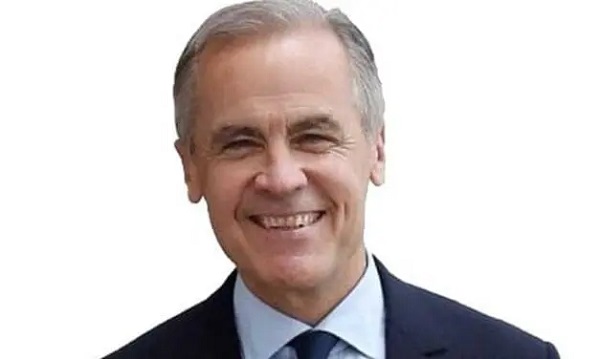
 Business1 day ago
Business1 day agoCarney’s spending makes Trudeau look like a cheapskate
-

 Business24 hours ago
Business24 hours agoCanada’s loyalty to globalism is bleeding our economy dry
-

 Alberta22 hours ago
Alberta22 hours agoAlberta Next: Alberta Pension Plan
-

 Economy2 days ago
Economy2 days agoTrump opens door to Iranian oil exports

